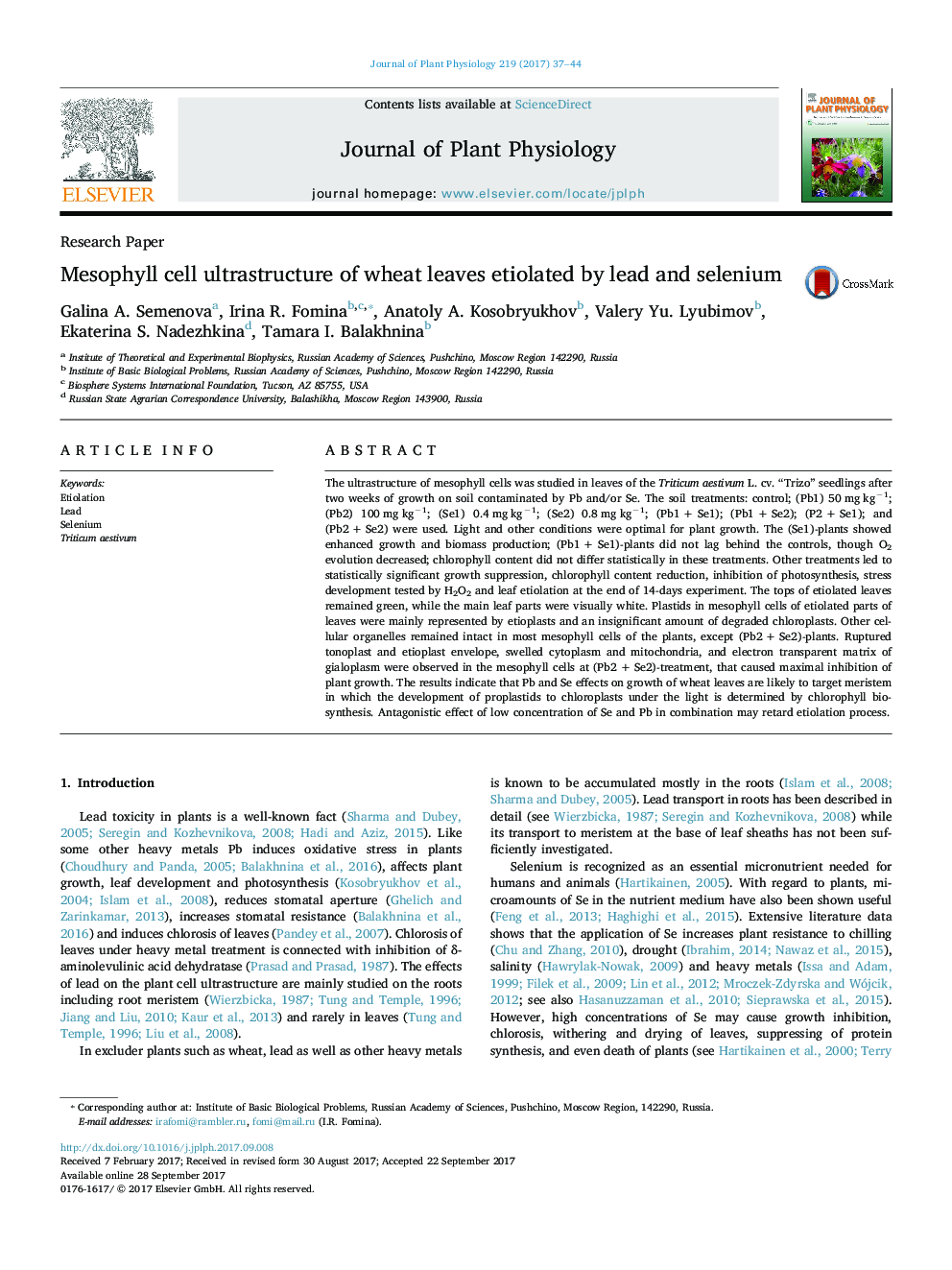| Article ID | Journal | Published Year | Pages | File Type |
|---|---|---|---|---|
| 5517949 | Journal of Plant Physiology | 2017 | 8 Pages |
The ultrastructure of mesophyll cells was studied in leaves of the Triticum aestivum L. cv. “Trizo” seedlings after two weeks of growth on soil contaminated by Pb and/or Se. The soil treatments: control; (Pb1) 50 mg kgâ1; (Pb2) 100 mg kgâ1; (Se1) 0.4 mg kgâ1; (Se2) 0.8 mg kgâ1; (Pb1 + Se1); (Pb1 + Se2); (P2 + Se1); and (Pb2 + Se2) were used. Light and other conditions were optimal for plant growth. The (Se1)-plants showed enhanced growth and biomass production; (Pb1 + Se1)-plants did not lag behind the controls, though O2 evolution decreased; chlorophyll content did not differ statistically in these treatments. Other treatments led to statistically significant growth suppression, chlorophyll content reduction, inhibition of photosynthesis, stress development tested by H2O2 and leaf etiolation at the end of 14-days experiment. The tops of etiolated leaves remained green, while the main leaf parts were visually white. Plastids in mesophyll cells of etiolated parts of leaves were mainly represented by etioplasts and an insignificant amount of degraded chloroplasts. Other cellular organelles remained intact in most mesophyll cells of the plants, except (Pb2 + Se2)-plants. Ruptured tonoplast and etioplast envelope, swelled cytoplasm and mitochondria, and electron transparent matrix of gialoplasm were observed in the mesophyll cells at (Pb2 + Se2)-treatment, that caused maximal inhibition of plant growth. The results indicate that Pb and Se effects on growth of wheat leaves are likely to target meristem in which the development of proplastids to chloroplasts under the light is determined by chlorophyll biosynthesis. Antagonistic effect of low concentration of Se and Pb in combination may retard etiolation process.
